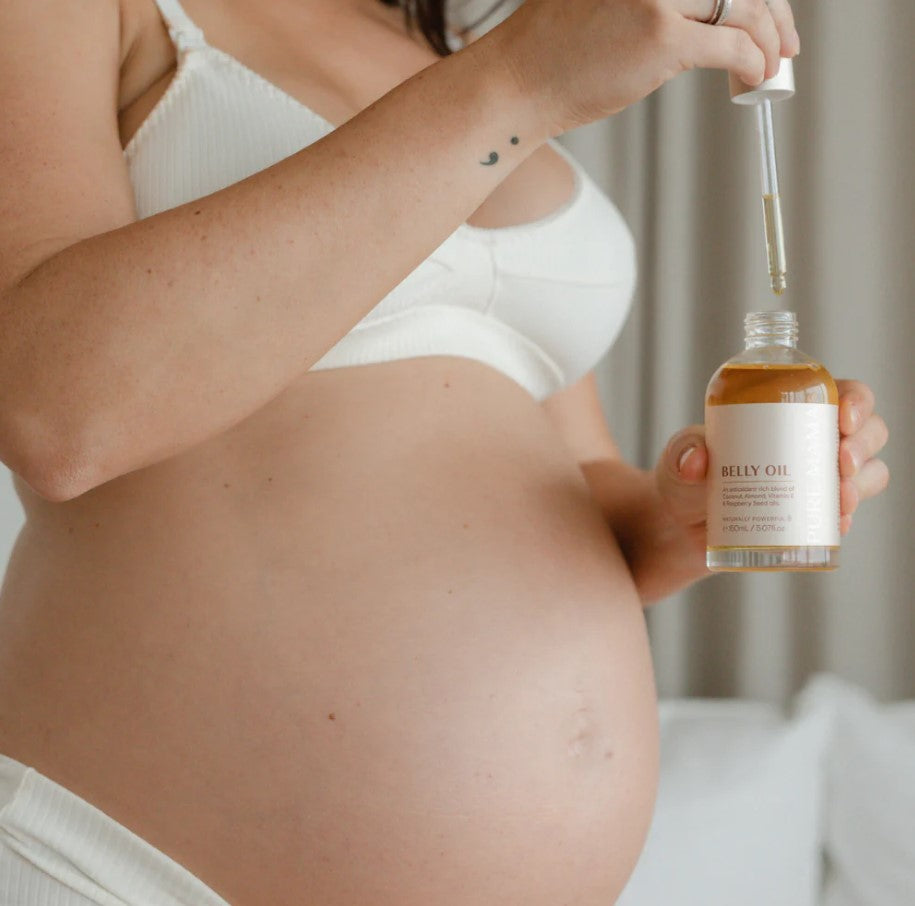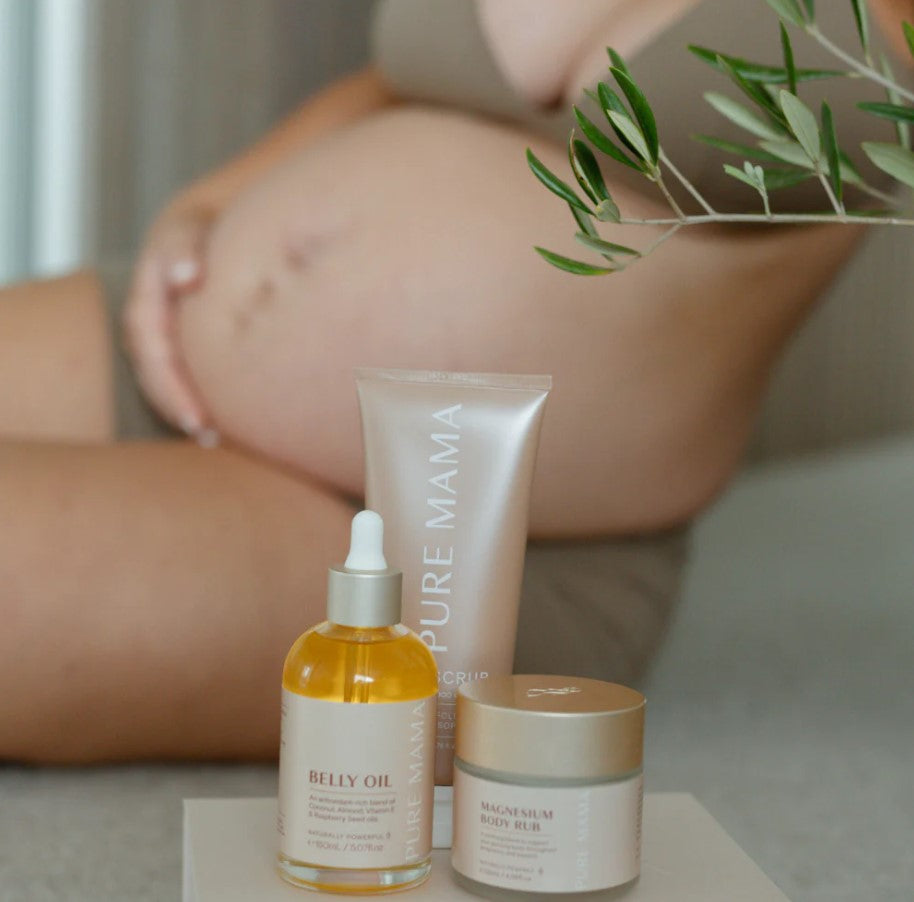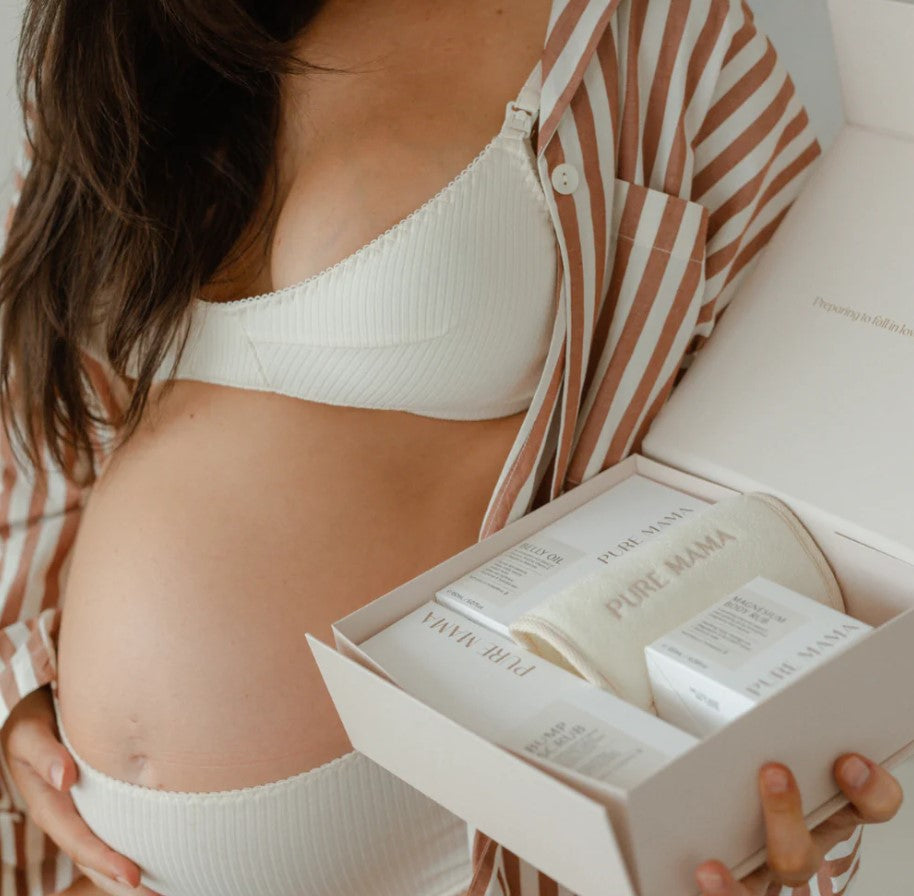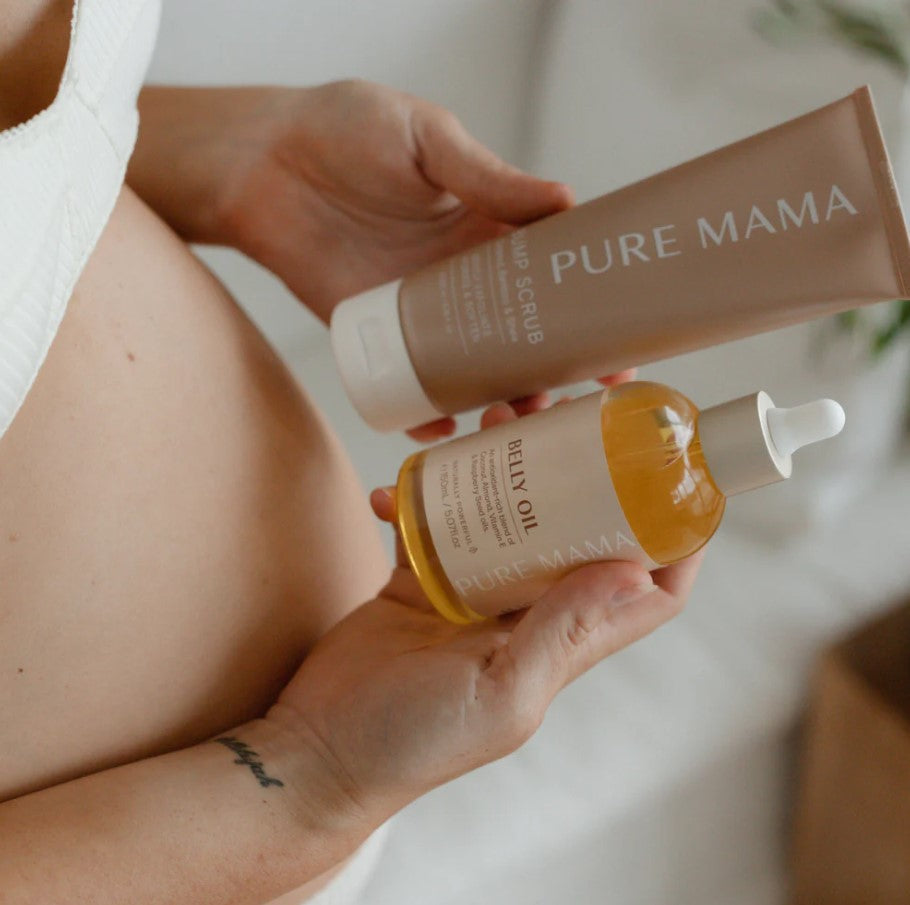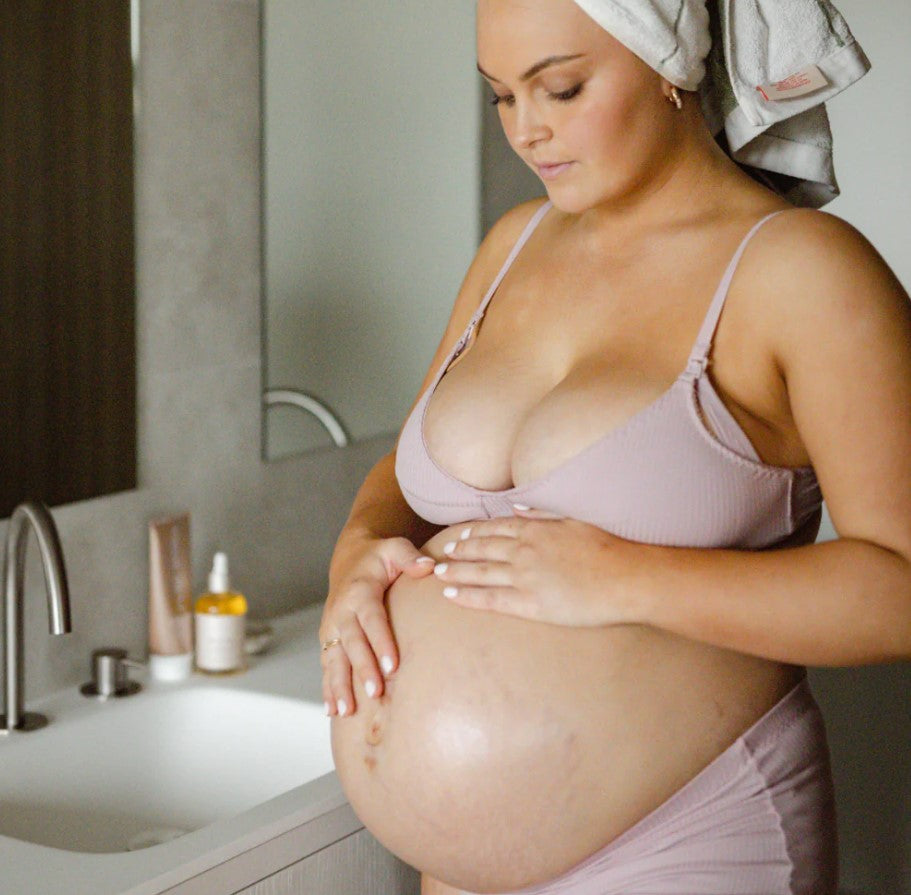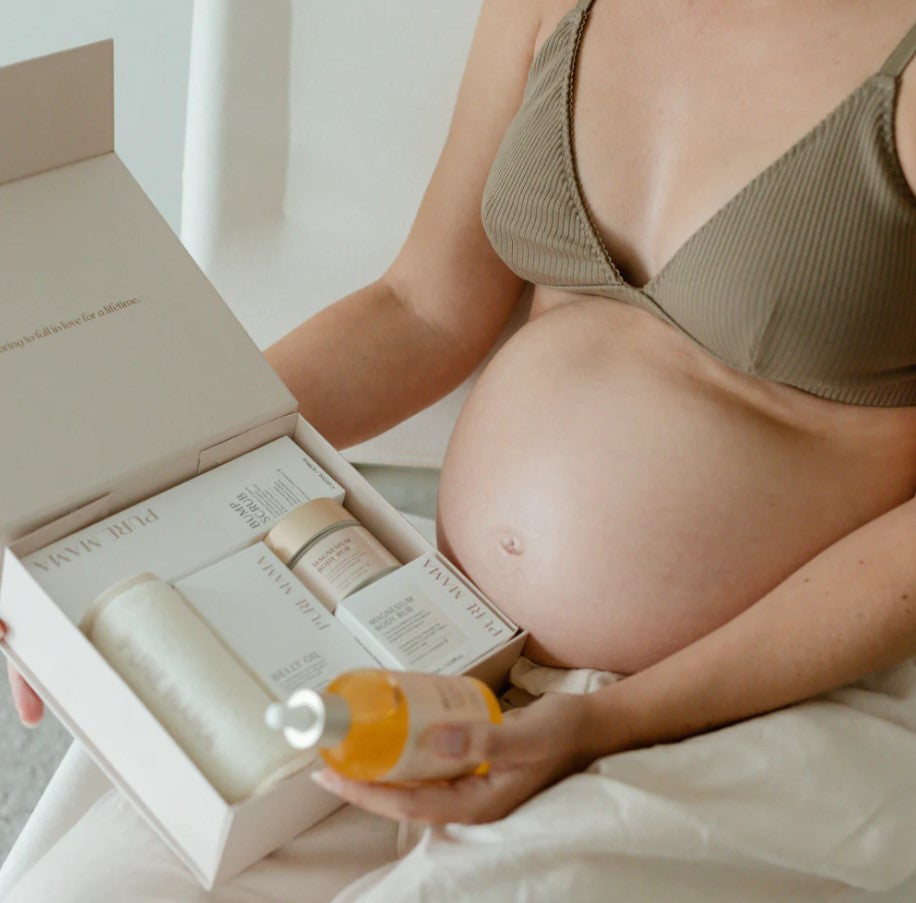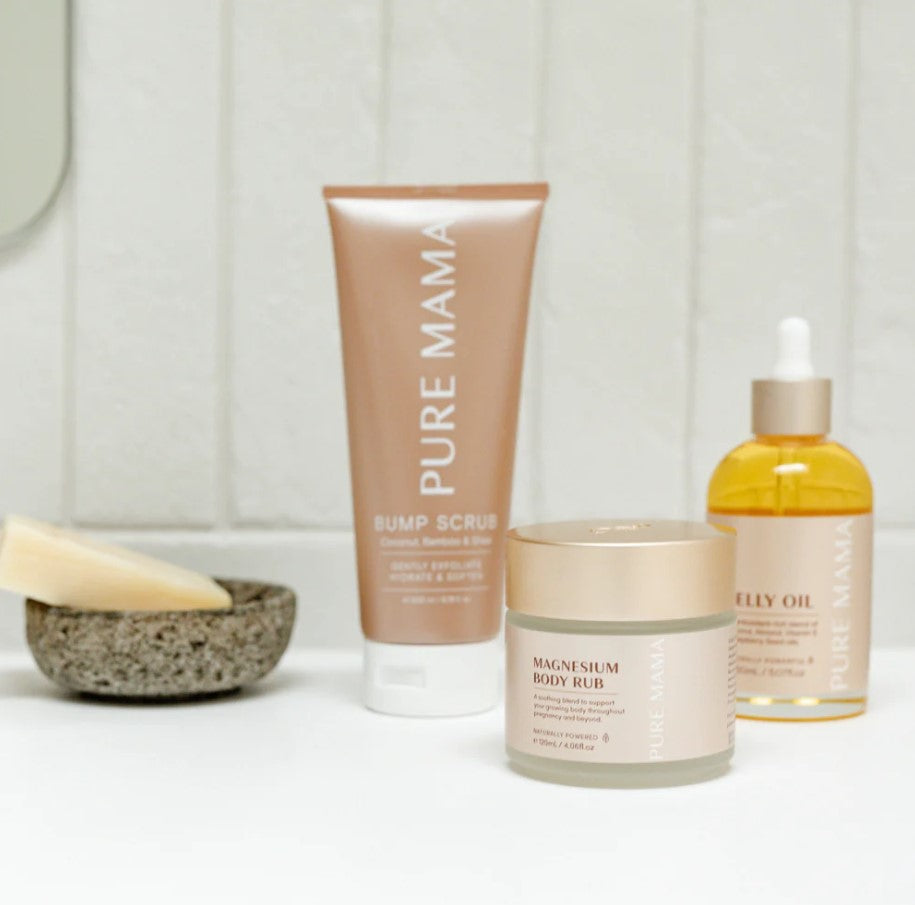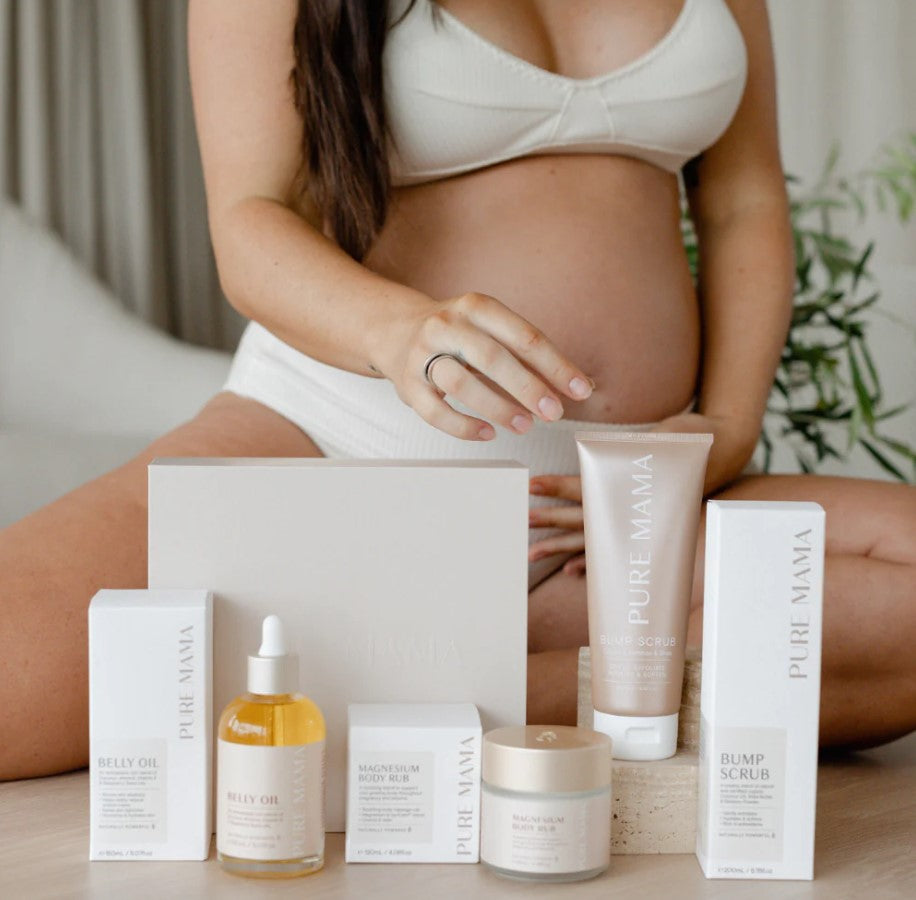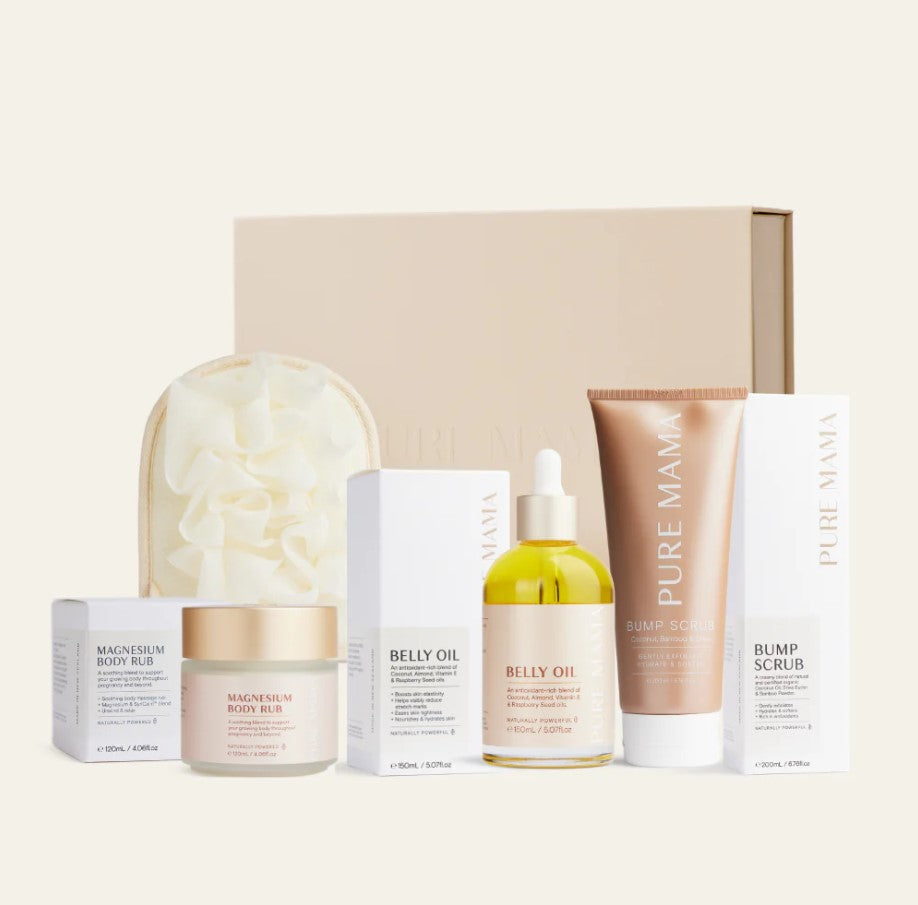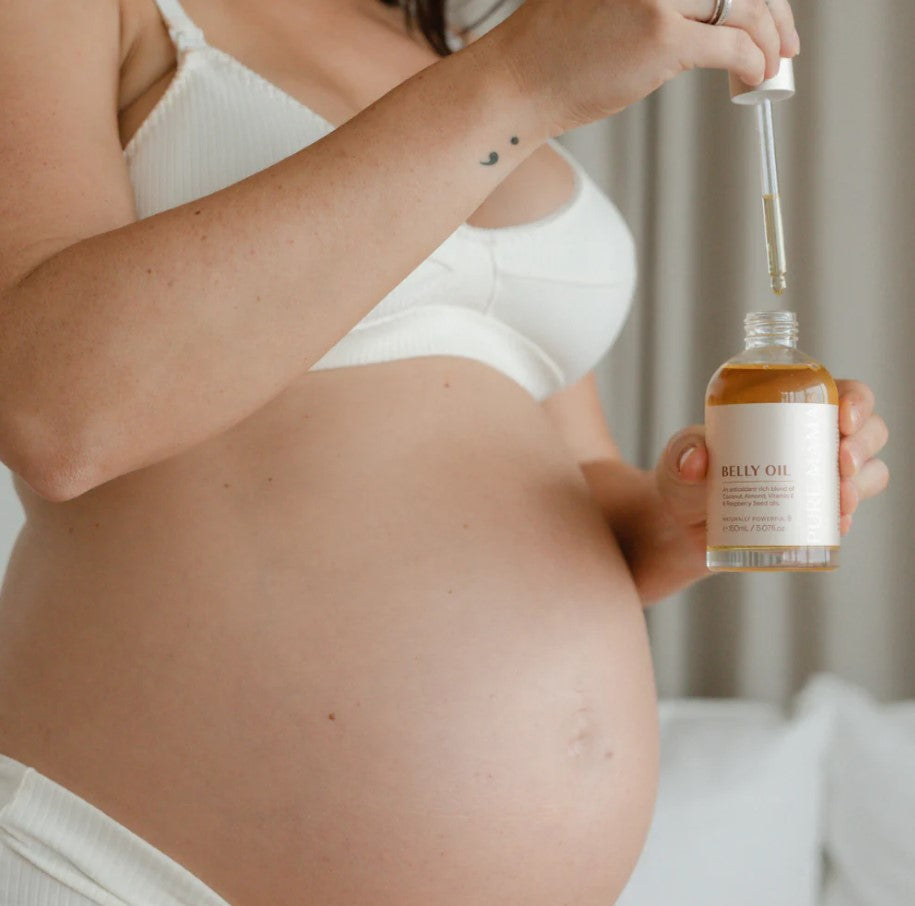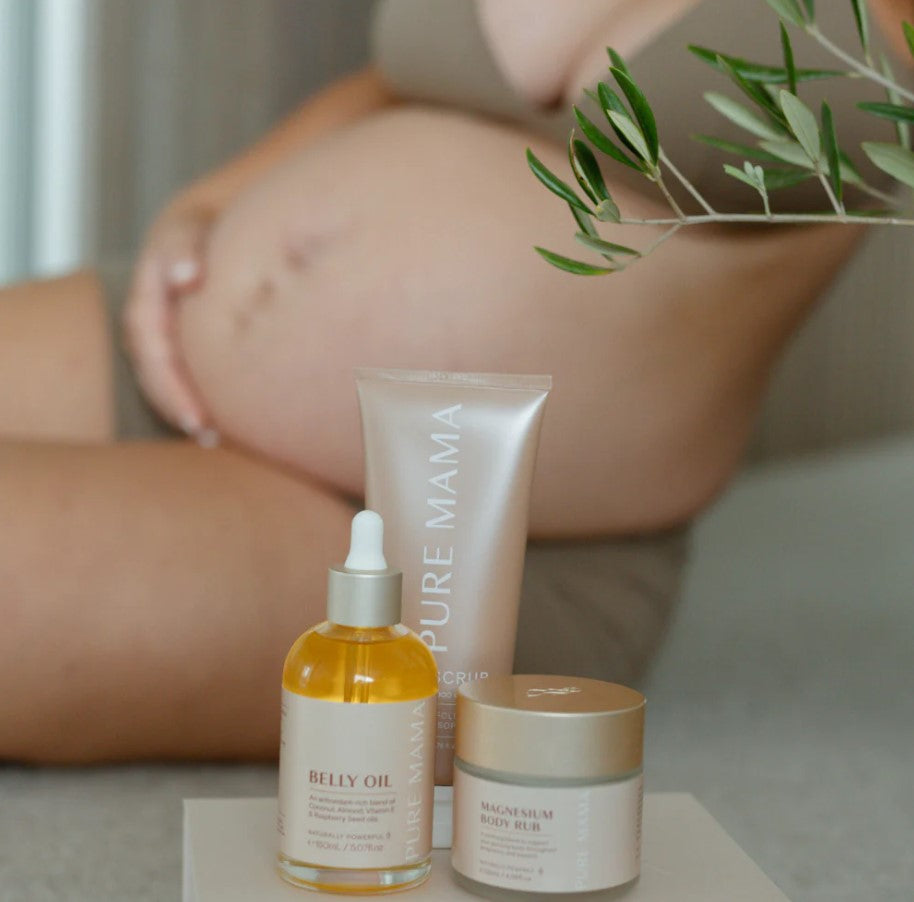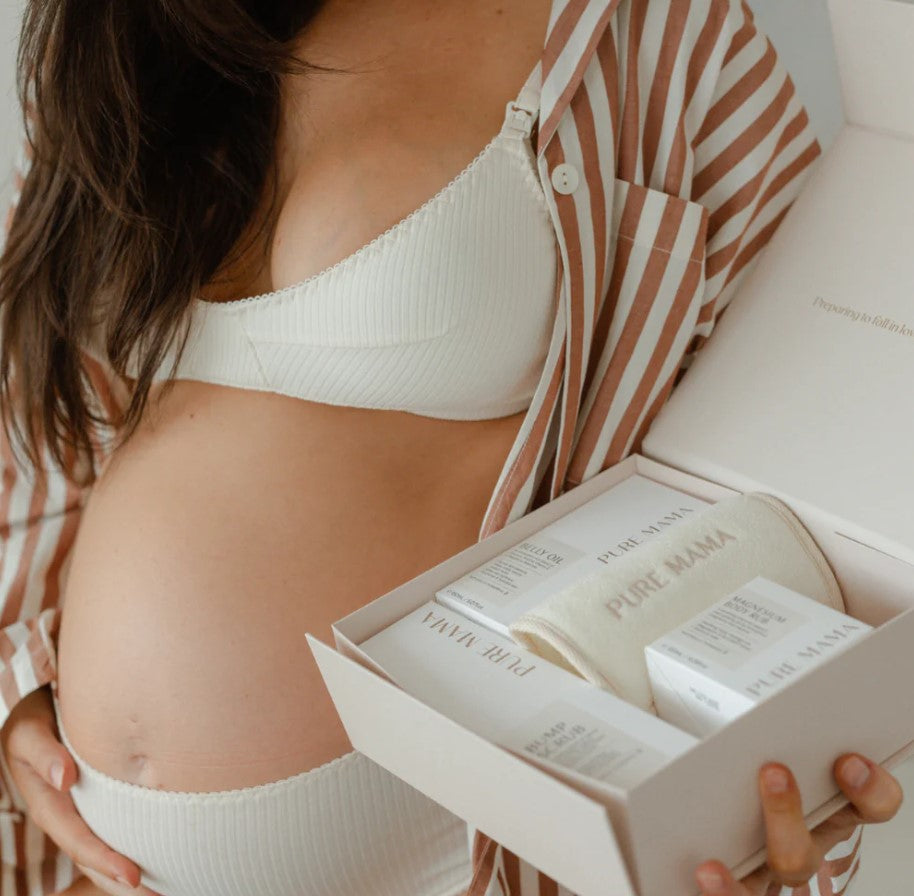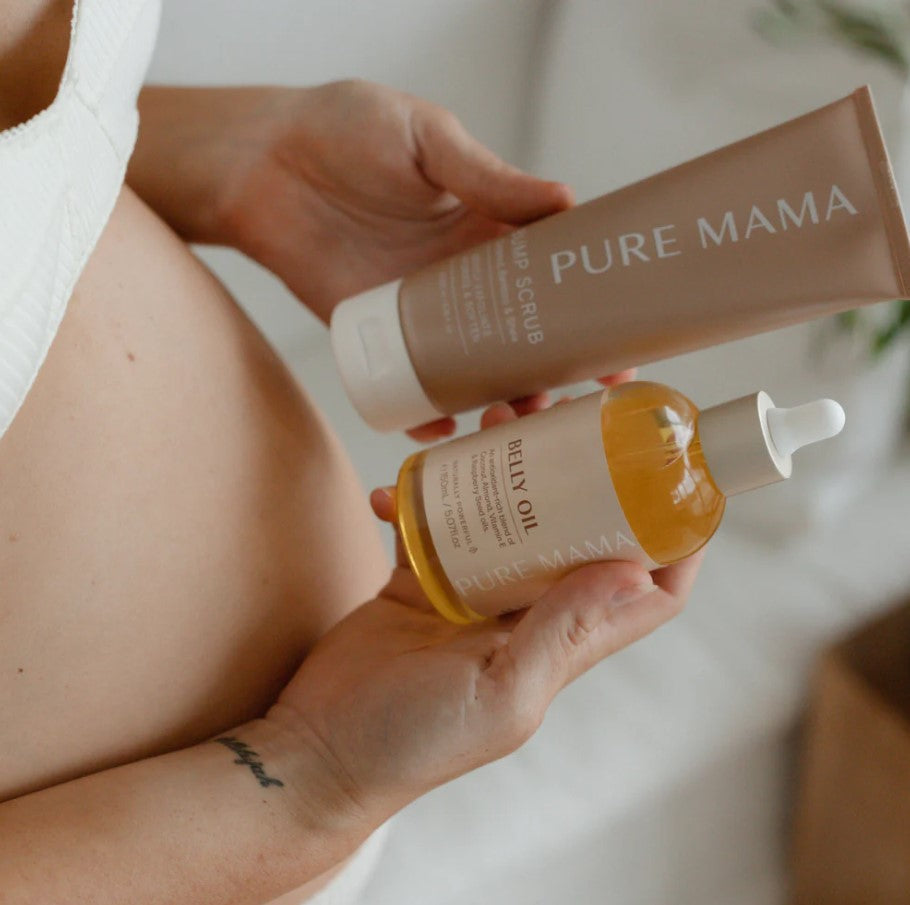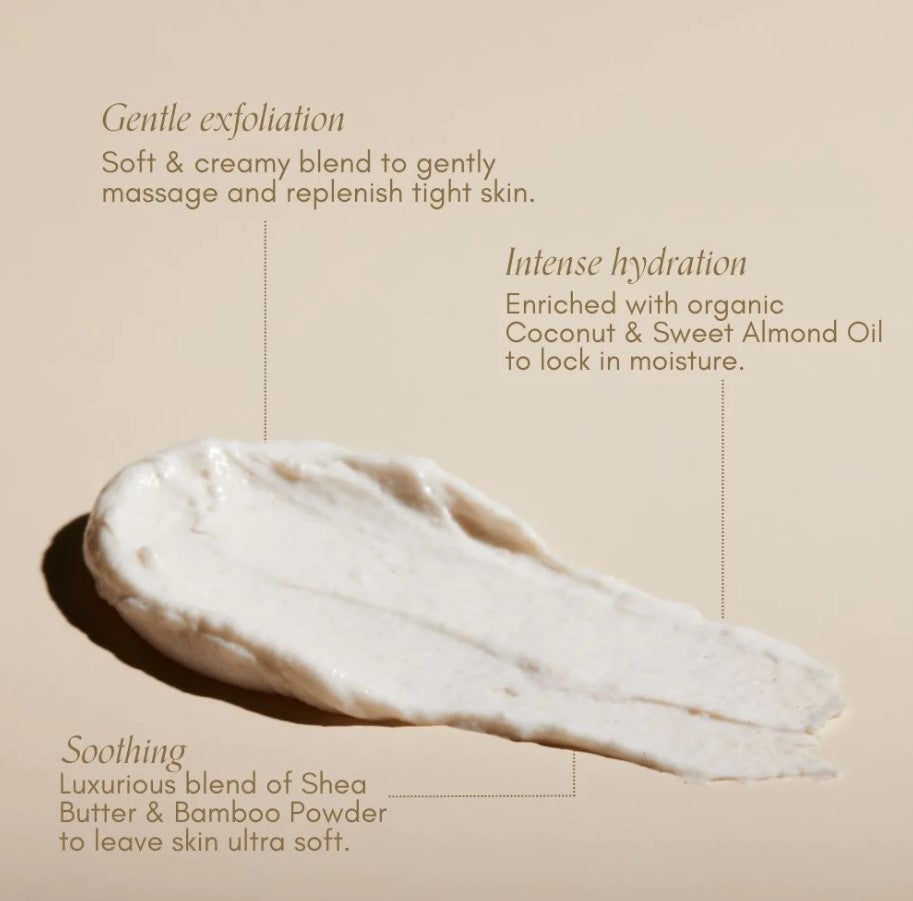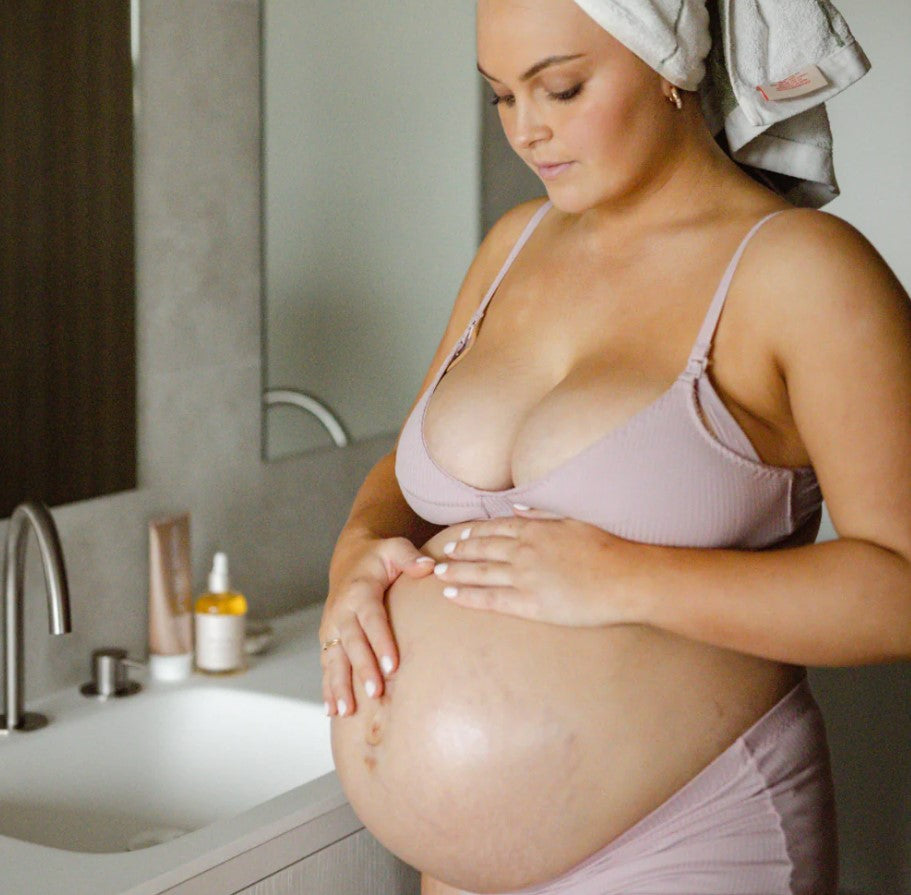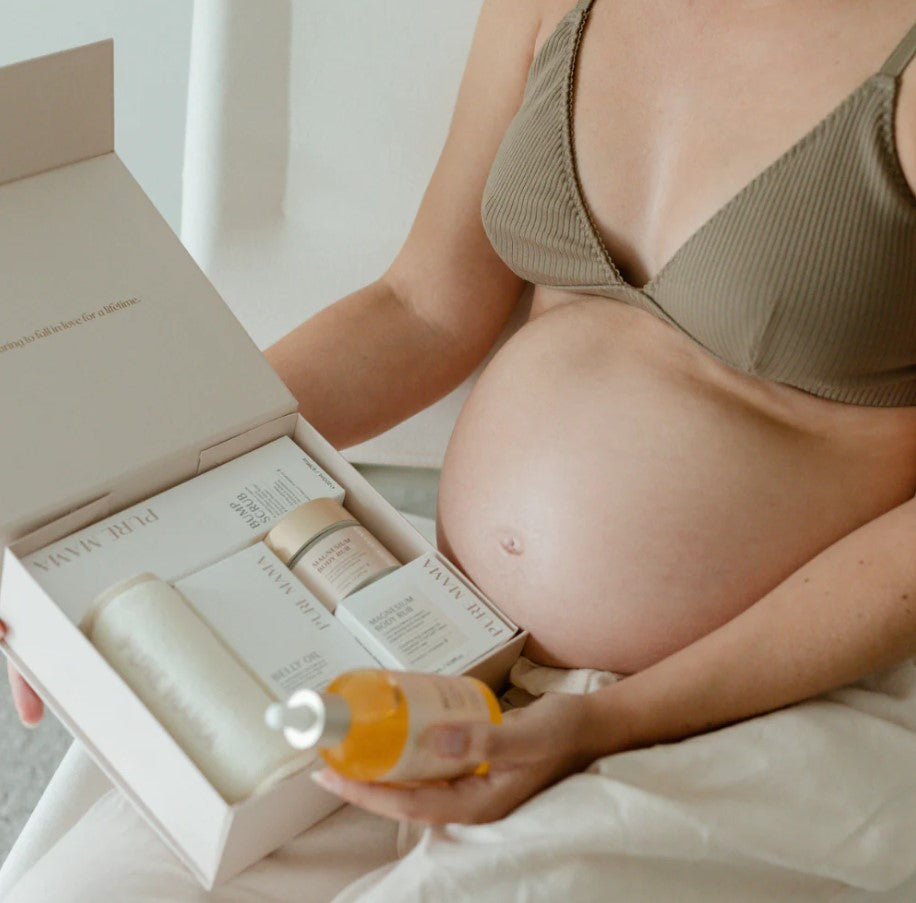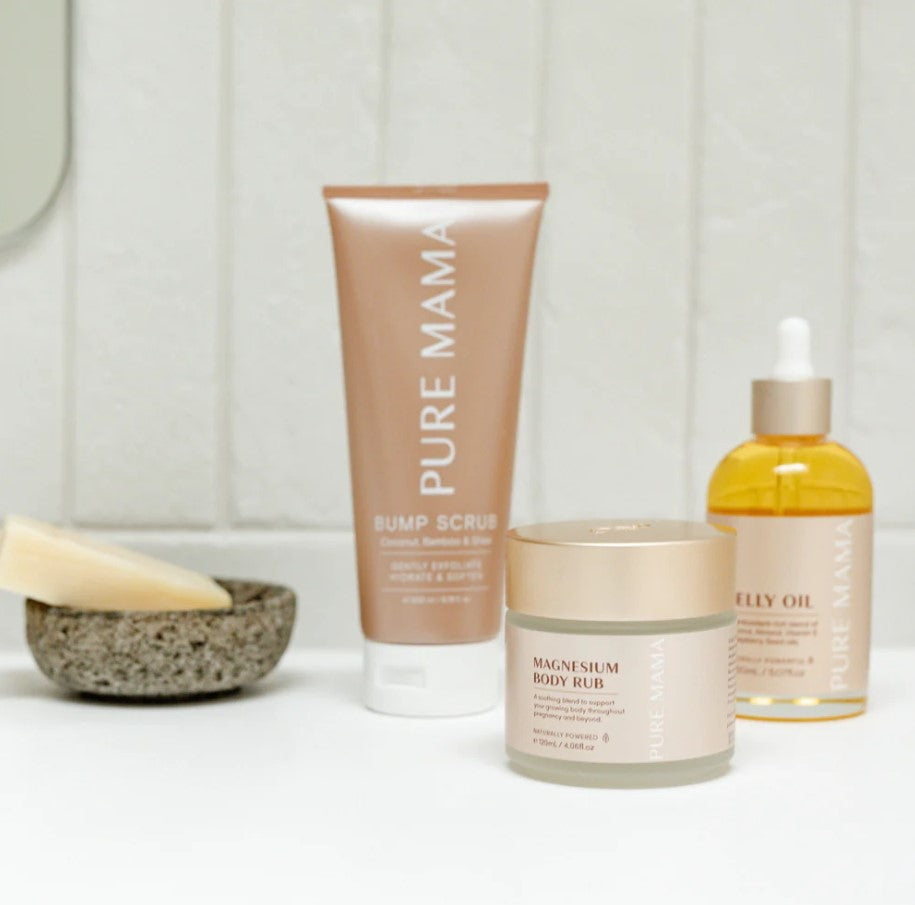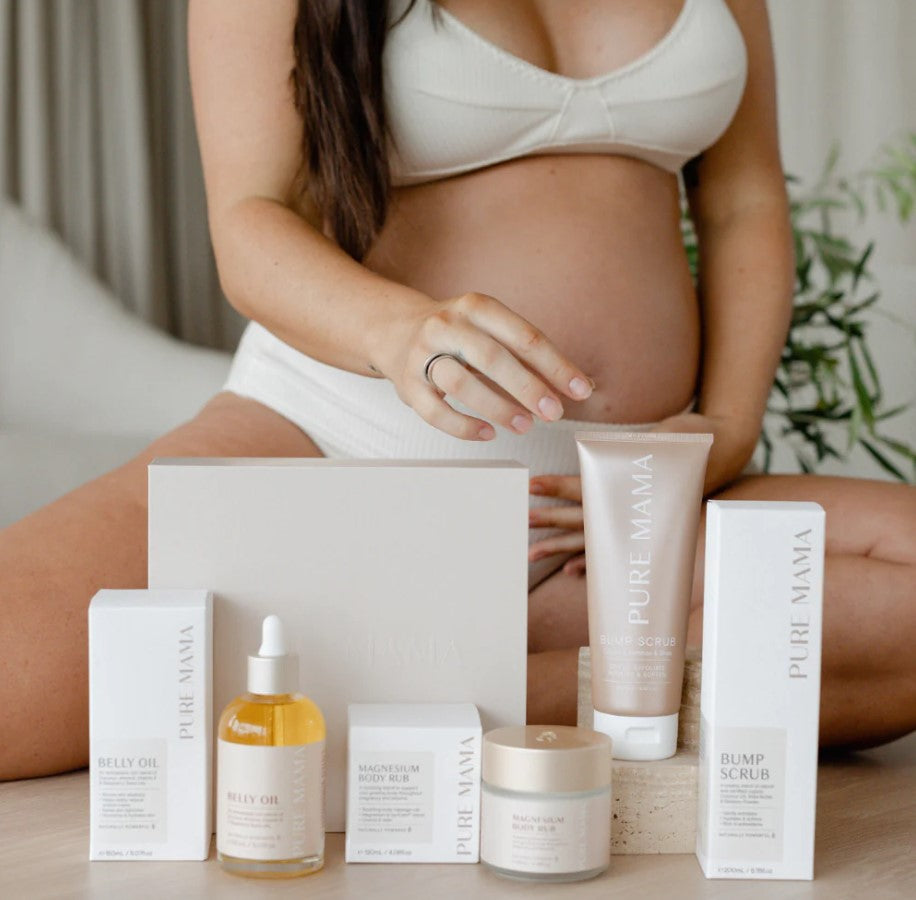Pregnancy Care Set
Pregnancy Care Set
SKU:PMPCS
In stock
Couldn't load pickup availability
Overview
Overview
A MUST HAVE TRIO FOR MAMA-TO-BE
The pregnancy care set is designed to take care of Mama, providing her with moments of self-care, connection and nourishment. These expertly formulated products combine nutrient-rich ingredients to support Mama with the highest-calibre skincare throughout her pregnancy. A luxurious mix of our three best sellers - Belly Oil, Bump Scrub & Magnesium Body Rub. All of our products are made with Mama in mind using natural and organic ingredients, to ensure only the best care for your or her pregnancy journey, through to motherhood.
What's Included
What's Included
Delivery and Returns
Delivery and Returns
- Delivery: Free within NZ on orders over $100 (excluding bulky items) or $8 standard shipping
- Returns: Accepted within 14 days of receipt with proof of purchase
- Some items are excluded from returns including sale items, hardware, car seats, prams, monitors and personal items - please click here for the full list.
Share this product
Recently Viewed Products
Related Blogs
The Secrets of Dimples Merino, Natures Miracle
Marvellous Merino – and How to Care for It Dimples high-quality Merino is made in New Zealand and designed to last – treat it with love and care and it will stay looking beautiful for years to come. Why Merino? Merino wool truly is nature’s miracle. Its warm, soft, breathable fibres keep your little one comfortable all year round. Because babies take time to develop the ability to regulate their temperature – and can’t tell us if they’re too hot or cold – Merino clothing and sleepwear offer peace of mind. The natural fibres form little pockets of insulating air, keeping warmth in on chilly days and helping release heat when it’s warm. Other wonderful benefits of Merino: Naturally hypoallergenic – gentle on delicate skin and suitable for babies with eczema, allergies, or sensitivities Naturally flame-resistant – without added chemicals Moisture-wicking – absorbs moisture while staying warm and drying quickly Stain-resistant – perfect for little spills and dribbles Keeps its shape – it stretches with your baby, then springs right back after each wash Made to Last Each Dimples Merino garment is lovingly hand-sewn and embroidered by our talented team right here in New Zealand. Crafted with care and attention to detail, these pieces are designed to last – ready to be worn, washed, and passed down through generations. To help your Merino stay soft, beautiful, and in great condition, it just needs a little extra love when it comes to care. How to Wash Merino Always check the garment’s care label first Do not soak – for stubborn stains, we recommend Sard Wonder Soap. Wet the stain in cold water, rub on the soap, agitate gently, then rinse thoroughly Use a wool-approved detergent like Earthwise Wool & Delicates. Dilute the detergent before adding to your washing machine – never pour directly onto the fabric Avoid detergents that contain eco-brighteners or enzymes, which can damage Merino fibres (even some ‘baby’ or ‘eco’ detergents) Use the wool wash cycle on your machine, or hand wash gently in cold water Rinse well, gently squeeze (no twisting), and lay flat to dry in the shade Never bleach, rub, soak or tumble dry. Merino prefers to be air-dried Cool steam iron if needed – and yes, it’s dry cleanable if preferred How to Dry Merino Merino should be air-dried flat in the shade. Direct sunlight can cause fading or damage, and tumble dryers are a no-go. How to Store Merino Because Dimples Merino contains no chemicals, it can be extra appealing to clothes moths. If you're packing your garments away for a while: Wash and dry them first Store in a sealed garment bag or container Clothes Moths – What to Watch For Noticed tiny holes? Pop the item into a sealed bag and freeze for 72 hours – this helps eliminate any moth larvae. After freezing, rewash the garment as usual. Shop the full range of our luxurious Merino here
Learn morePregnancy Stages - Third Trimester
Can’t wait to meet you! Here’s what happens during your third trimester of pregnancy. You’re on the home stretch! It’s your third trimester, the final stage of your pregnancy, marked from week 29 to 40 (or even week 42 or 43, if you go over!) Anything uncomfortable that started getting niggly in the second trimester will continue, and probably get worse. You can expect a bunch of others to join the party, too! The good news is that it’s now possible for your baby to survive outside of the womb with some medical help, and every day that passes it’s getting stronger – something you’ll sure feel as it begins walloping you. This growing little person is now taking up more space, which pushes your internal organs up into your ribs, presses on your bladder and makes digestion difficult. You may get breathless and need to pee a whole lot more often. This is totally normal and will go away almost the second the baby is born. As your due date approaches, your body also begins getting ready for birth. The baby will start sitting lower in your belly, and your cervix will begin to thin and soften, which can feel like period cramps. You may also begin to feel Braxton Hicks, which are like tiny contractions and make your whole belly go rock hard. What happens to your body? This is the month of big physical changes on the outside for you-you'll look really, obviously pregnant, and begin to feel heavy and slow. Sleeping may also get harder – the weight of your belly means sleeping on your back is uncomfortable (and even dangerous), while side sleeping may feel more comfortable with a pillow between your knees and another under your belly. Here are some other things you may experience • Swollen feet, ankles, face or fingers. If you puff up suddenly or gain weight quickly, call your doctor – it could be a sign of pre-eclampsia, which is serious. • Constipation • Hemorrhoids • Tender breasts, which may begin making colostrum (pre-milk) • A popped-out belly button • Shortness of breath • Heartburn • Difficulty sleeping What’s going on in there? At 29 weeks, your baby is pretty much fully formed but is still busy getting everything into working order. Weighing in at about 1kg, and 38.5cm long, your baby’s soft bones are getting harder, with more calcium deposits. The brain is also fired up with neurons, gaining folds as it gets more complex. At 33 weeks, and kicking up a storm, your baby is 1.5kg and is losing living space by the day. Your baby is gaining about 200g a week, filling in that wrinkled skin The eyes can now open and close, but the lungs are still not quite ready yet. Even so, your baby has begun practicing breathing, by inhaling amniotic fluid. The fine covering of hair is now beginning to fall off, but many babies are born with much of it – and it falls off completely after birth. Your 36-week baby is counting the days until you finally get to meet. In the meantime, it’s in there packing on the pounds. The vernix, that waxy coating, is thickening and your active wee one is almost certainly pummeling you from within – you may even be able to tell whether that bump in your belly is a foot or a hand. At 40 weeks, your baby has organs that all work on their own and is technically ready to come out – although many babies stick around for two or three weeks longer. As your due date approaches, your baby will (hopefully) move its head down, facing backward. This is the ideal (but not the only) birth position. While you’re pregnant it can feel like a never-ending journey, and then suddenly you meet that little person you’ve been carrying for close to ten months. The range of emotions you might feel at this point is enormous – the first days with your new baby can be exhilarating, exhausting, heartbreaking and utterly wonderful all at the same time. You might suddenly see your pregnancy as a strange dream that happened to someone else! Getting ready for a baby? Click here to view our newborn essentials checklist.
Learn morePregnancy Stages - Second Trimester
Hello in there! Here’s what happens during your second trimester of pregnancy. The second trimester, marked from weeks 13 to 28, is often when pregnant women feel at their best. The major developments in your baby’s growth have slowed, which means the hormones (and all the horrible symptoms!) tend to ease now, too. Your baby bump will be popped out – so people stop wondering if you’ve just been eating too much cake – and you can also begin to feel a bit more reassured that your pregnancy will be viable. It’s extremely unusual to miscarry after week 12, which is why many parents wait until the second trimester to announce their impending addition to the family. Your baby is busy refining the developments made in the first trimester, which means you’ll still feel reasonably light and mobile. The second trimester is arguably the most exciting period in pregnancy. On top of feeling a lot better, you’ll also begin to see obvious signs of life. Some women feel movement as early as 13 weeks, but some don’t feel those first flutters until closer to 25 weeks. It all depends on your baby’s positioning, and where your placenta is. It’s in the second trimester that you’ll have scans that will tell you your baby is growing as it should, and, if you like, what sex it is. While the external sex organs are more clearly male or female now, scans can get it wrong – it’s not unheard of for parents to take home a little girl when they were expecting a boy (and vice versa!) What happens to your body? While your body is saving up all the really big changes until the third trimester, you’ll still notice a big shift. Here are some symptoms you may experience: Feeling achy in your back, tummy, groin, or thighs Stretch marks on your tummy, breasts, thighs, or bum Darkening of the areola (skin around your nipple) Development of the linea nigra – a line on your skin running from belly button to pubic hairline Patches of darker skin on your cheeks, forehead, nose, or upper lip Numb or tingly hands Itchy tummy, palms or bottoms of the feet. If this is combined with fatigue, nausea and yellowed skin, call the doctor – it could be your liver. Swollen feet, ankles, face or fingers. If you puff up suddenly or gain weight quickly, call your doctor – it could be a sign of pre-eclampsia, which is serious. The good news is that this is the trimester for the famous pregnancy glow. If you’re lucky, you might notice your hair getting lush and shiny, your nails growing faster, and your skin looking radiant. Not too bad right? Remember to treat yourself kindly – lots of good food, sleep and gentle exercise. You may notice feeling a little slower, or short of breath now, too – this is normal. Listen to what your body is telling you and try not to push yourself too hard. What’s going on in there? At 16 weeks, your baby is about 11.5 cm long and weighs a hefty 85 grams. This trimester is all about putting the finishing touches on its little work of art. The bones and muscles are still forming and the skin appears – it’s nearly transparent. Your baby will also be making its first poo! This is called meconium and develops in your baby's intestinal tract. The sucking reflex is working overtime, practising for the breast or bottle. Whether or not you can feel it, your baby is also getting frisky in there, kicking arms and legs, and swimming around in that still-roomy sack. At 20 weeks, the way your baby is measured changes. Before, your baby was measured from head to bum – it’s hard to measure those tiny legs when they’re all tucked up. At 20 weeks, people generally begin measuring foetuses from head to heel – so it can seem your baby has stretched from 15cm in week 19 to 25cm in week 20. Your baby’s skin is now covered by fine, feathery hair, called lanugo, and a waxy protective coating called vernix. Other hair comes in too – eyebrows, lashes and the first tufts up on top. Your baby can swallow, and also has working ears – you may notice your baby’s movements respond to sound. By 24 weeks, your baby is over halfway done – and babies born at this stage have even been known to survive, with a lot of medical help. There’s still plenty more left to do, though. Your baby needs to fatten up, and still has important elements developing: bone marrow begins to make blood cells, taste buds, footprints and fingerprints form, and sex organs are all present and accounted for. Your baby’s lungs are formed, but still don’t work. What happens next? Read about your third trimester.
Learn moreWhy Carrycots Are One of Our Best Sellers
Carrycots – Essential or Nice to Have? How a Carrycot can make a new parent’s life easier When preparing for your baby’s arrival, the list of must-have essentials can seem endless—carrycots, capsules, bassinets, and buggies, all competing for your attention. Among these, carrycots often sit in a grey area, leaving parents wondering if they’re truly necessary. However, there are several reasons why carrycots are one of Dimples’ best-sellers, and we’re here to explain why they could make your life a whole lot easier. What is a Carrycot? A carrycot is a lightweight, portable bed designed for babies up to around three to six months old (or about 10kg). Unlike a traditional bassinet or Moses basket, a carrycot attaches to your stroller, making it perfect for sleeping while you’re out and about. Its flat, firm mattress ensures your little one can lie down comfortably, and the design keeps them safe, supported, and relaxed while they nap. As your baby grows, they’ll eventually outgrow the carrycot, but for the first few months, it provides a cosy, familiar space that’s easy to move with you. Why Do You Need One? You’ve likely already invested in a capsule for car trips and a bassinet for naps at home, so you might be wondering where a carrycot fits into the mix. Let’s take a closer look at the benefits it offers: Carrycots vs. Capsules for Sleeping Capsules are often designed to easily attach to your stroller for convenience, allowing you to transfer your sleeping baby from the car to the stroller without waking them up. However, experts caution against leaving your baby in a capsule for extended periods. Babies need to lie flat to keep their airways open, and when they're in a capsule, their heads can flop forward, which could compromise their breathing. A carrycot, however, provides a flat surface for your baby, ensuring proper alignment and safe sleep. While it can be tempting to leave your baby in the capsule for longer outings, a carrycot offers a far safer sleep solution for extended naps or trips to the park. Moving them from capsule to carrycot after a quick car trip helps keep their sleep environment safe and comfortable. Take a Walk While They Snooze One of the perks of a carrycot is the ability to get outside and enjoy some fresh air while your baby naps peacefully. After feeding or playtime, simply attach the carrycot to your stroller, and off you go! The gentle movement of the stroller, combined with the outdoor sounds, is often just the right combination to lull your little one into a restful sleep. Carrycots are designed to be outdoors-friendly, with weatherproof fabrics, adjustable canopies, and compatible rain and sun covers, so your baby stays protected no matter the weather. Even better, when your baby is deep in sleep, you can easily unclip the carrycot from the stroller and bring them inside to continue their nap. That means you get to enjoy a quiet moment to yourself while your baby stays snug and safe. Carrycots vs. Portacots for Overnight Stays When it comes to overnight visits, whether to Grandma’s house or a weekend getaway - a full-sized portacot can be a hassle to pack and set up. A carrycot, on the other hand, is compact and easy to transport, making it the ideal sleep solution for short stays. With a firm mattress and familiar surroundings, your baby is more likely to settle quickly in a carrycot, even in a new environment. Carrying a bulky portacot for a quick trip or family visit can feel like overpacking, especially when you have a simple, lightweight carrycot that does the job just as well. The convenience of clipping it onto your stroller for a walk, and then using it as a portable bed for overnight stays, gives you the best of both worlds. Say Goodbye to the Bassinet A bassinet or Moses basket can take up a fair amount of space in your home, and while they're lovely for the first few months, they’re not always necessary if you have a carrycot. Many parents find that a carrycot serves as both a primary sleep spot at home and a portable solution for outings. Since a carrycot is designed for safe sleep, you can use it as your baby’s designated napping spot - whether at home, in the park, or at a friend’s house. Plus, since it’s only useful for a limited time, you get the most out of it by making it your go-to sleeping solution in those early months. Carrycots vs. Lie-Flat Strollers Many strollers are suitable for newborns, but most require the baby to be strapped in. If your baby is swaddled or sleeping peacefully, it can be a hassle to unstrap them and disrupt their comfort. With a carrycot, you can avoid all those buckles and straps. Simply place your baby in the carrycot, and you’re good to go - no need to worry about disturbing them or removing their swaddle. This makes the carrycot a much easier and more comfortable option for those first few months. What to Look for in a Carrycot Choosing the right carrycot is about more than just size - it’s about convenience, comfort, and safety. Here are some key features to look for: Certified for overnight sleep: If you plan to use the carrycot for naps and nighttime sleep, ensure it’s certified for overnight use. Weatherproof accessories: Look for a carrycot with a generous canopy, plus optional rain and sun covers, especially if you’ll be using it outdoors. Easy to carry: While the carrycot will often be attached to your stroller, you’ll also need to carry it at times. Make sure it has sturdy, comfortable handles that make it easy to transport. Easy care: Babies can be messy, so choose a carrycot with machine-washable components like the mattress cover or liner. Easy to connect: You don’t want to struggle with complicated clips when your baby is having a fussy moment. A carrycot that’s easy to attach and detach from the stroller will save you time and frustration. Compatibility: Ensure the carrycot fits securely on your stroller. The combination of a carrycot and stroller is crucial, as you’ll use it for many months to come. Final Thoughts While not essential for everyone, many parents find it a really useful addition in those early months – giving their baby a safe, flat sleeping space that’s easy to move from stroller to indoors without disturbing precious naps. Whether you’re out for a walk, visiting family, or just needing somewhere for baby to rest during the day, a carrycot can help simplify life a little. If you’re unsure whether a carrycot is the right fit for your family, feel free to get in touch or pop into store – we’re always happy to help you figure out what’s best for you and your baby. We have some amazing bundles to choose from, as well as a range of choices to suit you. Check out Dimples’ range of carrycots here.
Learn more


